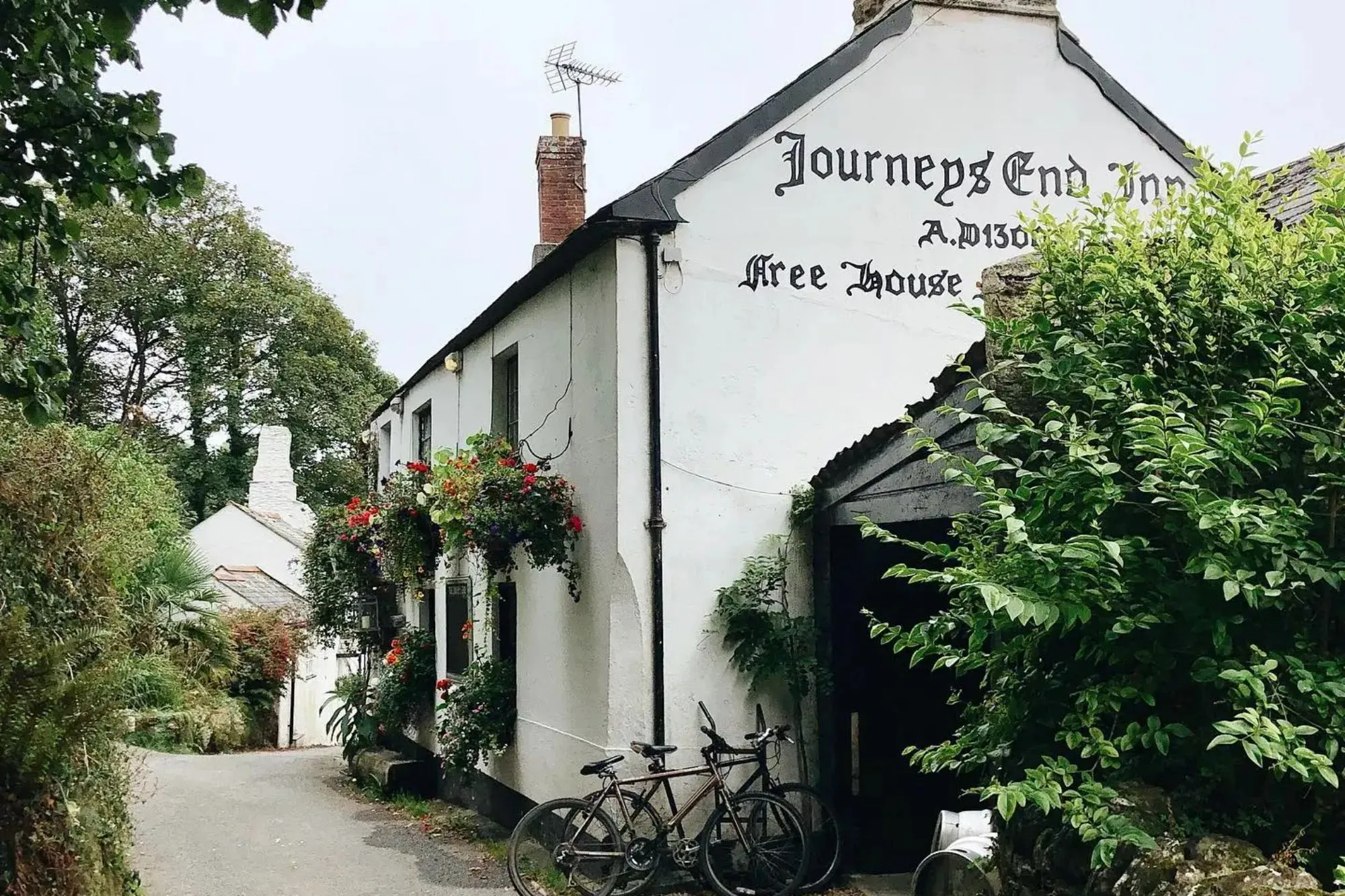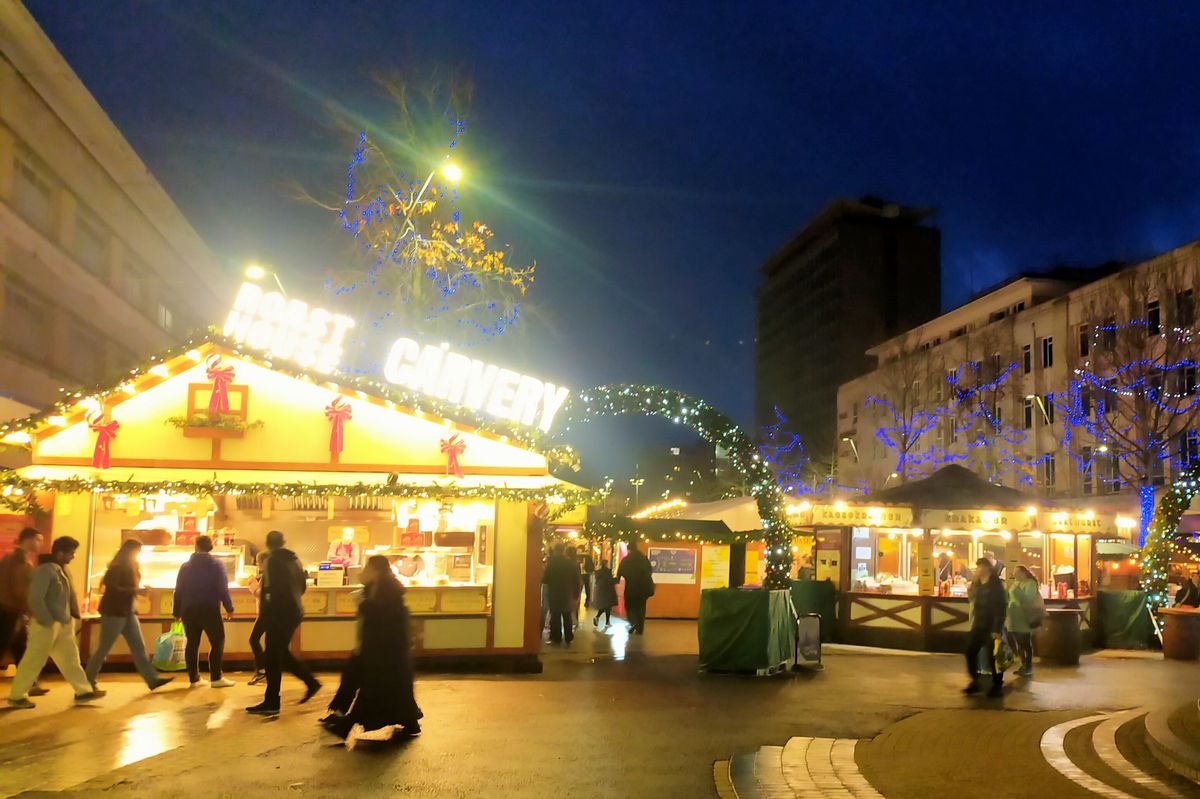A Christmas market in a seaside city features unique gifts, delicious food stalls and live music with traders from across the UK and Ireland. It’s a great place to find presents
A festive market is buzzing just a short stroll from where I am. I’ve already made a few visits to this Christmas spectacle and the atmosphere is truly enchanting. There’s an extensive array of stocking fillers, unique clothing at fantastic prices, and a delicious assortment of food and drink.
The city of Plymouth is aglow with twinkling lights and brimming with festive cheer. Live music fills the Piazza, featuring Christmas carols as well as rock, pop, soul and more — and traders have travelled from all corners to showcase their specialities here this December.
Market vendors have expressed their love for the “vibrant” locale, with many sellers making their first trip to the coastal city. Having frequented the Plymouth Christmas Market for a decade, I can confidently say that this December, it’s radiating a particularly sparkling energy.
Nestled between the breathtaking scenery of Dartmoor National Park, which also offers a stunning winter backdrop, and the beautiful county of Cornwall to its west, Plymouth is ideally situated, reports the Express.
Local traders Adam and Nicola Webb, who run Nicky’s Glow Beads & Gifts in the nearby Cornish town of Saltash, have set up a fantastic stall at this year’s Plymouth Christmas Market, offering top-quality Italian jumpers for sale.
I snagged a cosy red jumper for £18 from this market stall, and I’m smitten with it. But it’s not just about jumpers in every colour of the rainbow, they also offer glow bead bracelets — a charming gift that comes in various hues and glows in the dark.
Sparkling festive brooches are up for grabs at this stall for a mere £5, along with some rather unique and appealing aroma diffusers. I reckon most shoppers could unearth a thrilling gift here.
The business has been flourishing since 2014 under the care of the husband-and-wife team of Adam and Nicky, who claim that quitting their jobs to start the venture was the “best thing” they’ve ever done.
Adam and Nicky craft all the beadware, including the glow bracelets, and also peddle clothing, accessories and gifts. I’ll certainly be making a return visit to this stall before the market wraps up on December 21.
But the next stall I dropped by was equally enchanting — and the gin on offer really caught my eye. Stall holder Hamish Thoburn of Garden Libations, a Plymouth first-timer, described the city as “very vibrant” and said he’d met “lots of lovely people” at the Christmas market while trading.
He journeyed down from Wales to sell his distinctive beverages. Speaking about his gin, Hamish revealed: “Stinging nettle gin is our biggest seller, a little tart at the beginning and it goes well with sparkling water, a slice of lime and a sprig of mint to make a nettle mojito.”
Naturally, I had to sample the nettle gin. It was remarkable and unique — it would make a fantastic gift, making this stall a must-visit.
Also trading at Plymouth’s festive market for the first time is Karl Toyne, who journeyed down from Lincolnshire. His business, Aunt Annie’s Fudge, has been around since 1966, offering intriguing flavours like lemon meringue, banana swirl and Ferrero Rocher — and it’s “award winning”.
Karl revealed: “I like the city, I’ve never been this far south before, it’s my first time ever in Plymouth and it’s a nice place. I’ve been running this family business for 15 years, but Aunt Annie’s Fudge has been going for a long time.”
I also had a chat with Damien Morgan from Tam Events. He travelled from Ireland to serve hungry customers delicious bratwurst, adding a continental flair to the Christmas market.
Damien shared: “I’ve been doing this since I was 18 years old. I’m now 33, travelling around the UK doing the markets and doing these Christmas markets.
“This is our first year in Plymouth, the crowds here are exciting, we’ve seen good reviews on it and the people are just lovely — it’s a lovely seaside city too, very beautiful.”
Local lady Mary Freeman has been a trader at Plymouth Christmas Market for 12 years. Her business, M & N Freemans, serves up a scrumptious festive feast encased in a massive Yorkshire pudding, which I’ve sampled and can attest that it’s utterly heavenly, plus it’s very Christmassy.
Mary shared why she loves to trade here: “I’m local, I was born and bred in Plymouth, every year we come in and get a unit, it’s my hometown. I love the atmosphere, especially when it’s lively. This year, there’s a lot of new traders, different food and different things, so hopefully it’s the busiest yet.”
Plymouth Christmas Market is on for several more days, with the final day being Sunday, December 21, when the Armed Forces Choir from Theatre Royal Plymouth will perform from 12.30pm to 1.30pm.
If you pop by, don’t forget to check out the Snow Globe, surrounded by “swirling snow and sparkling lights”. It’s an absolutely perfect spot to snap a festive photo with your family or mates.



